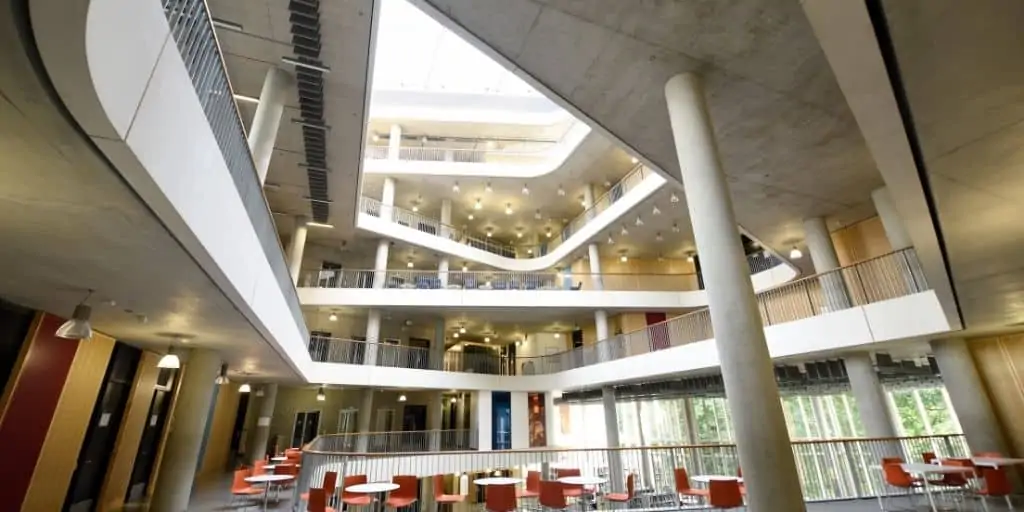What Is Common Area Maintenance (CAM)?
REtipster does not provide tax, investment, or financial advice. Always seek the help of a licensed financial professional before taking action.
What Does Common Area Maintenance Include?
CAM refers to any maintenance needed to keep a commercial property’s common areas safe and clean. In residential real estate, CAM is one of the primary duties of the homeowners’ association[1].
Since there are different types of commercial real estate[2], what can be considered common areas may differ from one property to another. Generally, these spaces are often the building grounds, parking lots, walkways, lobbies, and communal restrooms. In multi-story properties, public corridors, elevators, and stairwells can be classified as common areas.
The lease agreement dictates what CAM constitutes; some landlords charge duplicate fees and oblige tenants to pay for system upgrades. Fortunately, CAM’s coverage is negotiable, and the tenant could argue against unreasonable demands.
How to Calculate Common Area Maintenance Fees
Usually, landlords calculate the cost of CAM using the common area load factor (also known as the load factor or add-on factor).
The formula for CAM looks like this:
Rentable Square Footage = Common Area Load Factor x Tenant’s Leased Floor Area
The first variable in the equation, the common area load factor, can be resolved by dividing the building’s rentable square feet divided by the building’s usable square feet. In turn, the building’s rentable square footage is the sum of usable square footage plus all common areas.
CAM fees are proportional to the rentable square footage.
Some landlords may use a simpler formula to figure out a tenant’s CAM fee. They simply divide one’s leasable square footage by the building’s total leasable square footage, just so:
CAM fees = Leasable Square Footage / Building’s Total Leasable Square Footage
So if a tenant leases an office that spans 10,000 square feet in a building whose total leasable space is 200,000 square feet, the tenant’s CAM fee is 5% of the lease’s cost.
To ensure reliable figures for these variables, landlords use the Building Owners and Managers Association International’s (BOMA) floor measurement standards[3] to determine common area load factors and rentable areas.
What Is the Difference Between CAM and NNN?
A triple net lease (NNN) is a type of commercial property net lease[4] that requires the tenant to shoulder the building’s three nets (property tax, insurance, and common area maintenance) in addition to the rent and utility bills.
In other words, CAM is only one of the aspects of a triple-net lease; a commercial property may choose to ask the tenant to pay for CAM only or all three nets.
Usually, CAM is the last main operating expense the tenant assumes, which is why in a double net lease or NN[5], the landlord remains responsible for common area maintenance. On the other hand, in a modified net lease[6], the landlord and tenant split CAM charges.
BY THE NUMBERS: In New York, the annual cost of maintaining commercial offices ranges from $1.72 to $4.80 per square foot.
Source: The Consulting Engineer
Is Common Area Maintenance Considered Rent?
Technically, CAM is not part of rent. Rent is a form of income, and CAM is not because the landlord cannot profit from it. CAM’s sole purpose is to cover the expenses of keeping the property secure and in good repair. In addition, CAM payments may not even go through the landlord, who receives only the rental income.
To the tenant, however, CAM may feel like rent because it is part of the fees they pay for.
Although CAM and rent are separate, they affect one another in a few ways.
For example, if a tenant is expected to maintain the commercial property, there must be some kind of reward to make up for this huge responsibility. That incentive is immunity to rent hikes, regardless of the escalation method[7].
Fixed rent will not negatively affect one’s cash flow[8] in the future, so it can mean the tenant has one less thing to worry about.
Furthermore, it is in the best interest of the party in charge of CAM to reduce the amount of upkeep the commercial property needs. Minimizing the likelihood of major repairs by being a responsible tenant translates to less overhead.
The landlord also enjoys fewer responsibilities for property care in exchange for (essentially) an earning cap. After all, the landlord remains liable for the tenant’s unfulfilled obligations even if they transfer CAM duties to the latter, so the inability to raise rent can offset some of the disadvantages.
What Are CAM Reconciliations?
Reconciling CAM charges (called “CAM recs”) ensures each tenant’s payment matches the total maintenance expense incurred throughout the year.
The problem stems from calculating CAM and when the CAM charges actually take place. The landlord calculates CAM annually (at the start of the year), but bills each tenant monthly. Since the landlord determines CAM fees based on the previous year’s total cost, the chance of billing tenants accurately for the upcoming year is rare.
For this reason, the goal of CAM recs is to determine how much every tenant has overpaid or underpaid and return or collect accordingly.
What Happens When CAM Fees Are Inaccurate?
It is not uncommon for landlords to miss the annual CAM rec deadline.
A late and inaccurate CAM rec for just one tenant could result in a considerable loss for the commercial property owner, especially for landlords with large portfolios and numerous tenants.
Worse, landlords with CAM slippage[9] may not even realize how severe the situation is until after automating the process. By the time they have sorted out their CAM rec errors, not all of them have the motivation or inclination to tell the tenants, whose unsettled contributions have ballooned over time, to make up the difference.
If neglected for too long, the statutes of limitations on CAM rec recoveries[10] can kick in and permanently prevent landlords from charging tenants what they still owe.
BY THE NUMBERS: Landlords could lose $20,000+ to $200,000+ in CAM slippage throughout a single tenant’s lease.
Source: CREModels
Takeaways
- In commercial real estate, CAM refers to the upkeep of areas all tenants share and rent. Compare this to a triple net lease, where the tenant assumes property tax, insurance, and CAM charges on top of the rent and utilities.
- Although it requires a monthly payment, CAM is different from rent because it does not provide income to the landlord.
- Reconciliation is the process of checking whether the payment of the tenant is sufficient or insufficient to cover the actual CAM charges incurred throughout the year.
Sources
- Zalvino, E. (2020.) 10 Things to Know about HOA Responsibilities to Homeowners. HomeLight. Retrieved from https://www.homelight.com/blog/buyer-hoa-responsibilities-to-homeowners/
- Rohde, J. (2021.) Real Estate 101: The 8 Main Types Of Commercial Real Estate. CommercialCafe. Retrieved from https://www.commercialcafe.com/blog/8-main-types-commercial-real-estate-work/
- Building Owners and Managers Association International. (n.d.) BOMA Standards. Retrieved from https://www.boma.org/BOMA/BOMA-Standards/BOMA/BOMA-Standards/Home.aspx
- Indeed for Employers. (n.d.) What is a Net Lease in Commercial Real Estate? A Guide. Retrieved from https://www.indeed.com/recruitment/c/info/net-lease-commercial-real-estate
- Cipolla, J. (2020.) What is a double net lease in commercial real estate? SquareFoot. Retrieved from https://www.squarefoot.com/leasopedia/double-net-lease/
- Kimmons, J. (2019.) The Modified Net Lease in Commercial Real Estate. The Balance Small Business. Retrieved from https://www.thebalancesmb.com/the-modified-net-lease-in-commercial-real-estate-2866577
- Catalano, D. (2020.) 4 Things to Know About Your Commercial Rent Escalation. REoptimizer®. Retrieved from https://www.reoptimizer.com/real-estate-optimization-blog/4-things-to-know-about-your-commercial-rent-escalation
- Rivero, Gordimer & Company. (2018.) What is Cash Flow and How Does it Affect Your Business? Retrieved from https://www.rgcocpa.com/news/what-is-cash-flow-and-how-does-it-affect-your-business/
- Sommer, M. (2021.) What are CAMs and How to Avoid CAM Slippage. CRESSblue. Retrieved from https://cressblue.com/what-are-cams-and-how-to-avoid-cam-slippage/
- Harris, M. (2018.) Why Retail Landlords Lose Tons Of Money To Faulty Expense Calculations. Forbes. Retrieved from https://www.forbes.com/sites/forbesrealestatecouncil/2018/09/07/why-retail-landlords-lose-tons-of-money-to-faulty-expense-calculations/








